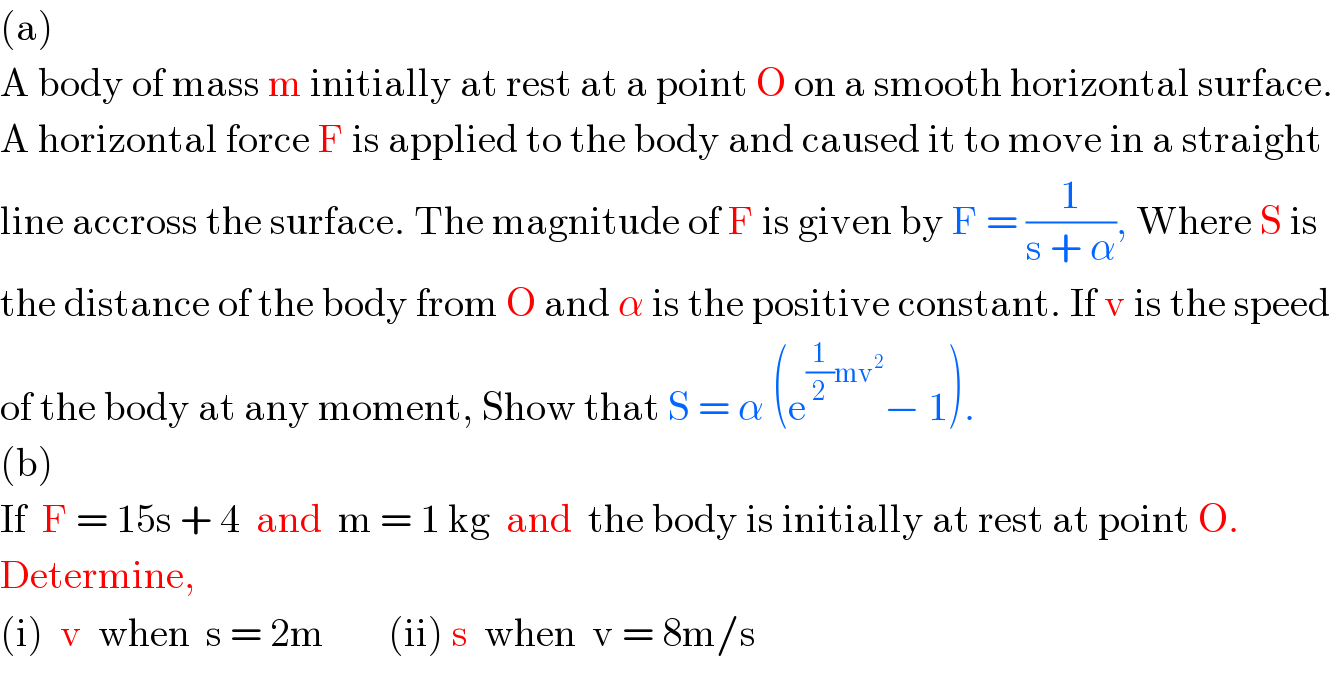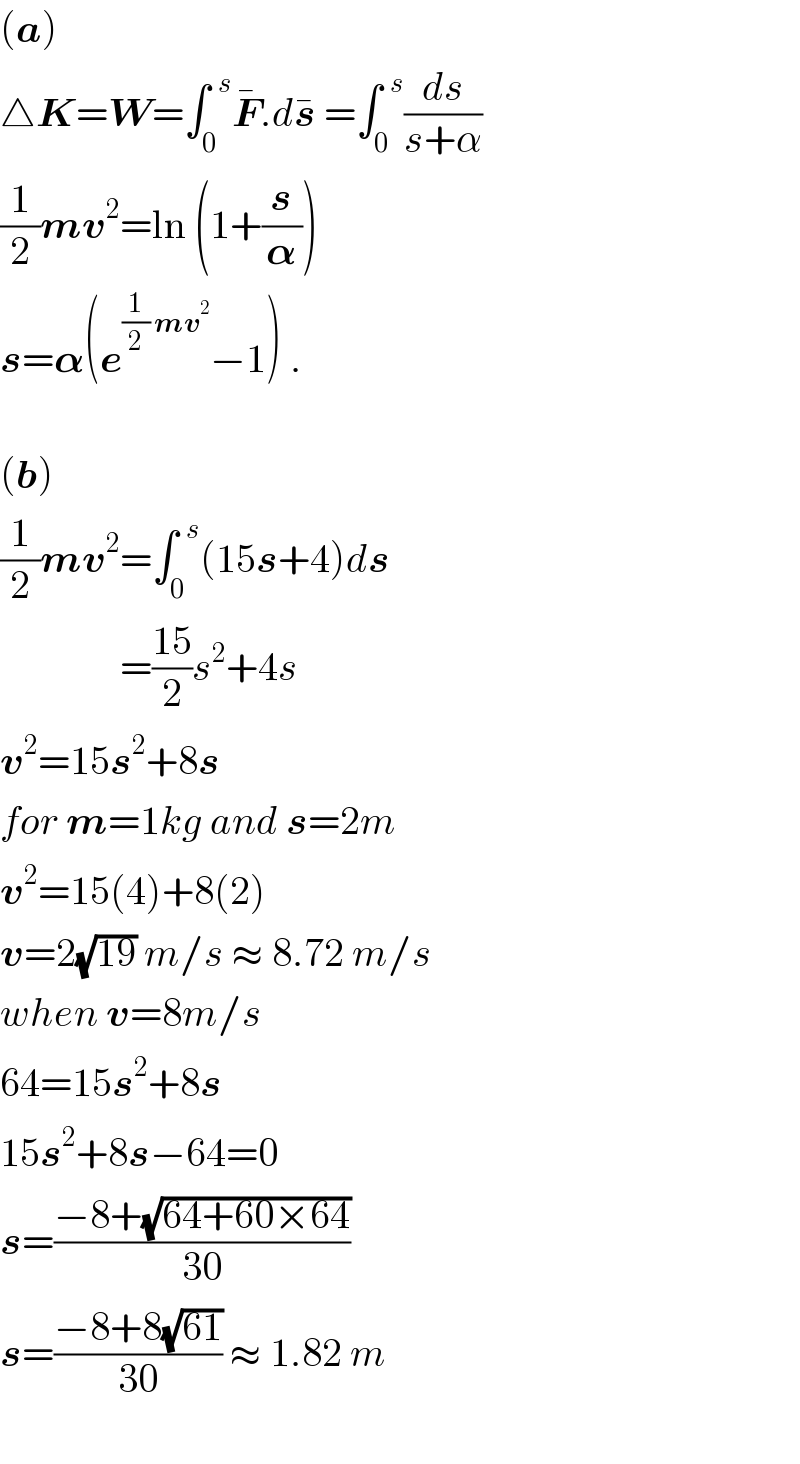Question Number 13302 by tawa tawa last updated on 17/May/17

Answered by mrW1 last updated on 17/May/17

Commented by tawa tawa last updated on 18/May/17

Answered by ajfour last updated on 18/May/17

Commented by tawa tawa last updated on 18/May/17

Commented by mrW1 last updated on 18/May/17

